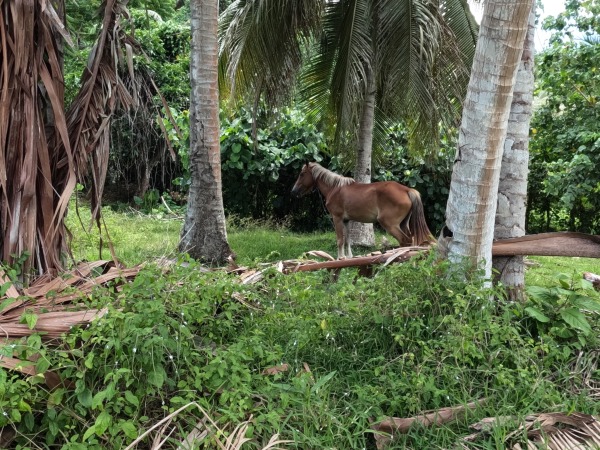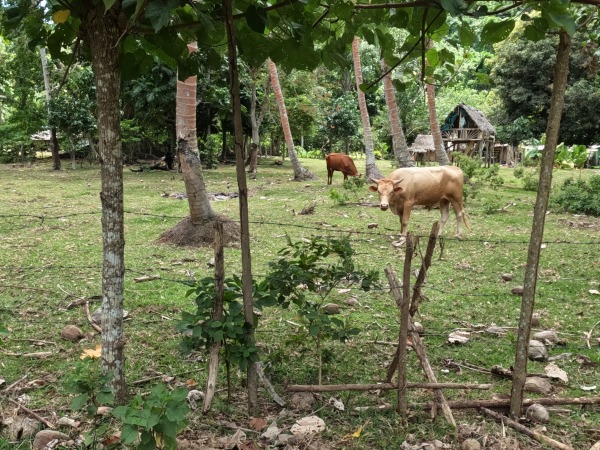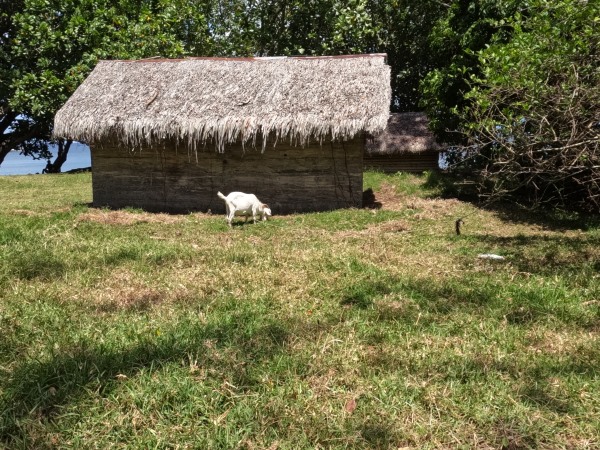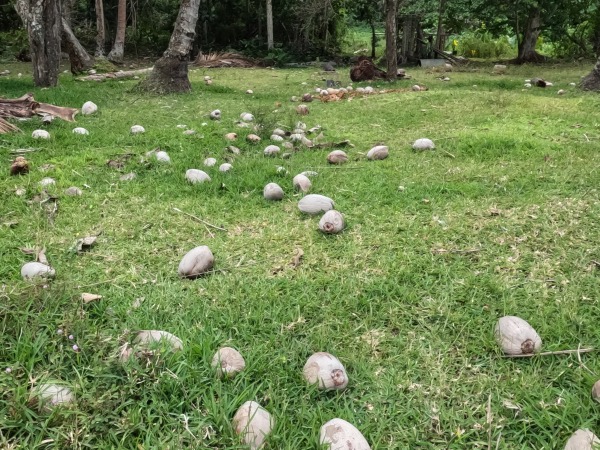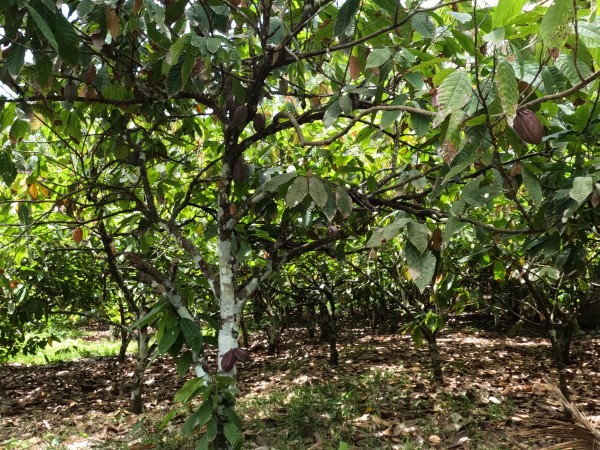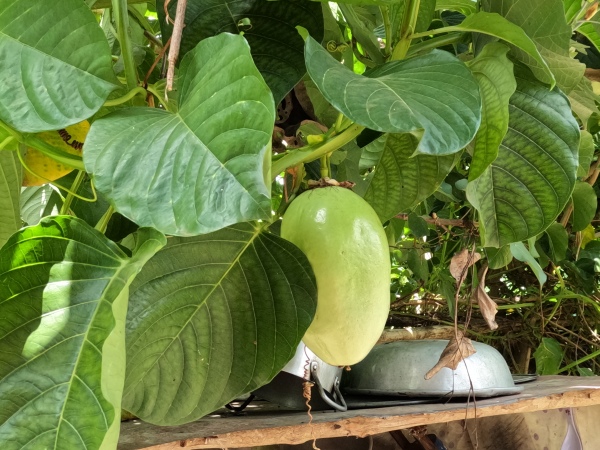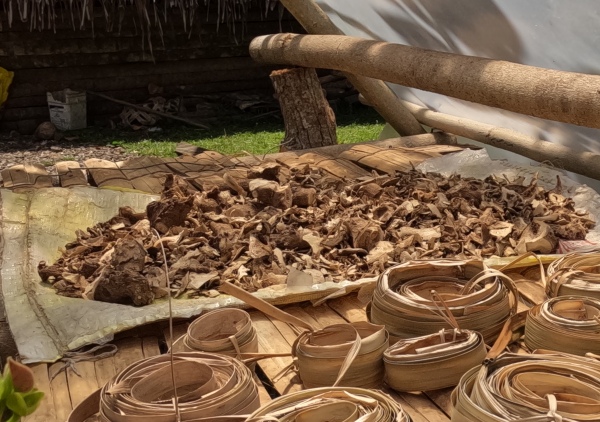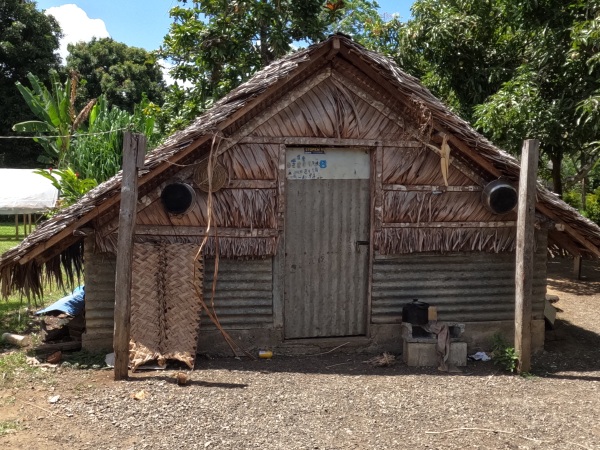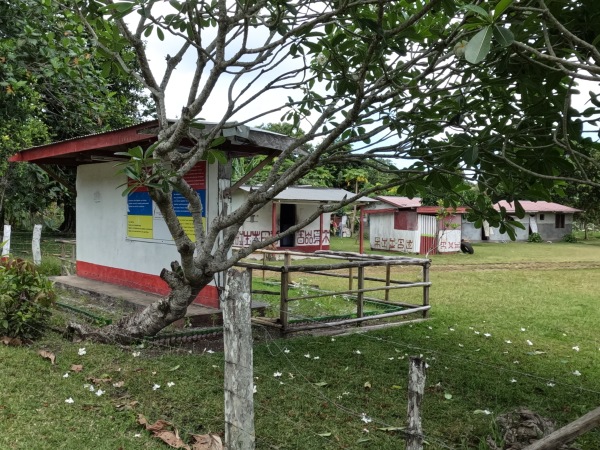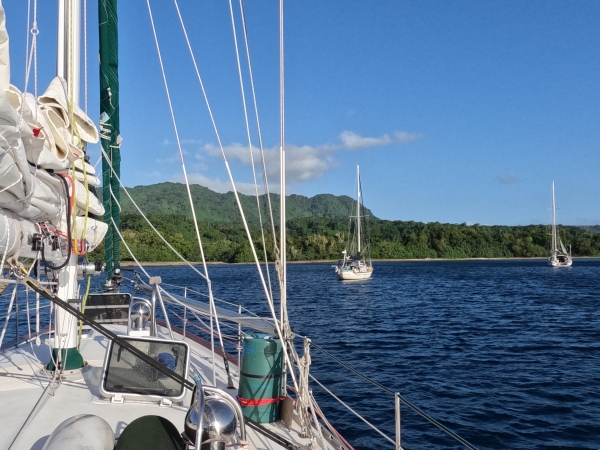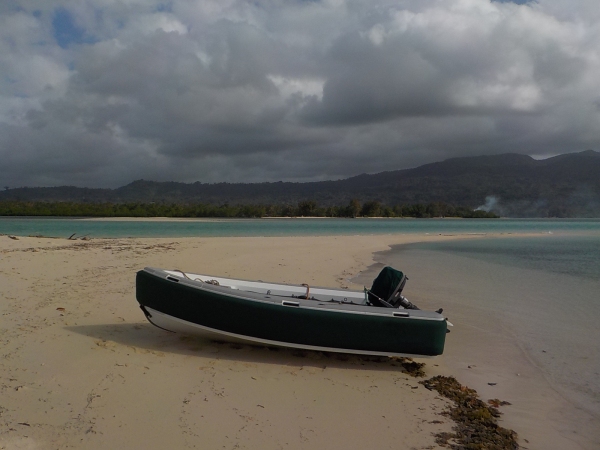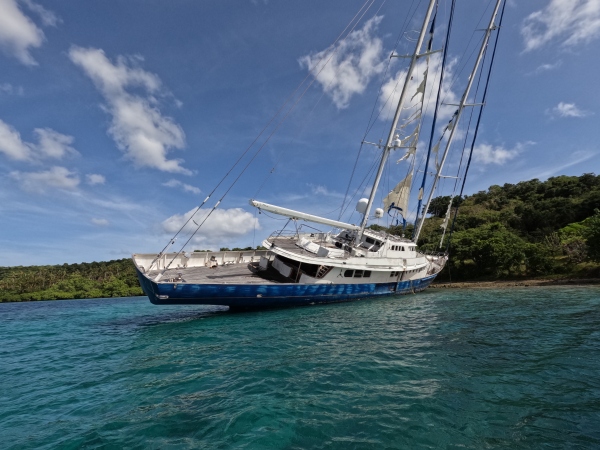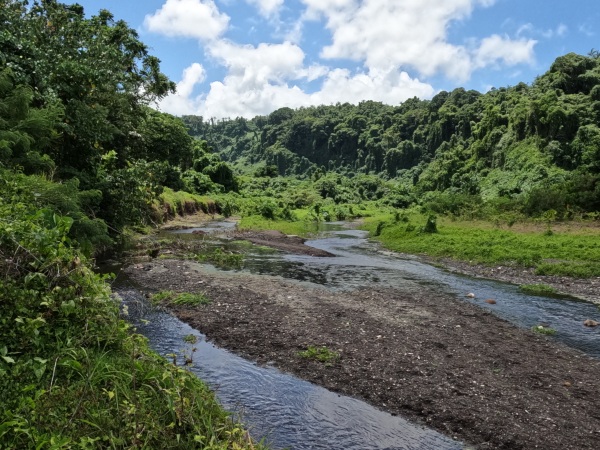
With a beautiful memory still fresh in Epi Island, we arrived at Malekula Island. Where should we anchor for the night? Gaspard Point was our pick! We made our decision after studying the weather, the Navionics Electronic Charts, and the Noforeignland app, which a friend had recently introduced to me. The Noforeignland app is very useful; according to it, there are dugongs (similar to manatees) at Gaspard.
Entering the anchorage, John commented that Gaspard can be a great hurricane hole, surrounded by mangrove trees and backed by dense jungle. With no one else around, I felt totally isolated. Before dusk, I smelled burning. I wondered if fishermen were on the shore cooking dinner, perhaps burning coconut husks. I’m generally not fond of the burning smell that drifts from each village at dusk.
We ran into a water problem. Recently, I had noticed a strange taste in our tap water from the water maker. Checking the parts per million (ppm), I read that the salinity was 1,600 ppm and getting higher daily. The average salinity of seawater is about 35,000 ppm, while the U.S. EPA guidelines for drinking water recommend a maximum of 500 ppm. Bottled water is typically under 100 ppm. We had replaced the water maker membranes just two months ago. What had happened?
I always carry extra bottled water for emergencies, but this was the only time I hadn’t. I had completely trusted the water maker. Membranes also have a short shelf life, so we don’t carry spares, and ordering from Amazon.com is simply not an option in this part of the world—it would take who knows how long. We need to be out of here before the cyclone season starts in November.
Our water maker is set up with two membranes. Troubleshooting showed that the water from one membrane was over 3,000 ppm, while the other was around 300 ppm. We concluded that one of the membranes was unusable, perhaps due to a micro-tiny crack (?). John decided to use only the good membrane. This slowed our water production to one liter per minute instead of two. Since our daily water consumption is 20 gallons (about 76 liters), it will take 76 minutes of generator running—or possible solar-charged battery power—to make water daily.
Before deciding to sail to Lamen Bay from Anduan Bay on Epi Island, I searched the Noforeignland app and found a small store right in front of the beach at the anchorage. We bought 17 bottles (1.5 liters each) for our emergency supply. I also read that a local person sells freshly baked bread under the shade of a big tree, but only after 3 or 4 p.m. on Tuesdays and Saturdays. As it happened, we were there on the right day. Timing is important in life! I bought one loaf. After taking a bite, I told John it was the best bread I had had in Vanuatu, so I bought another. I asked the couple if they used coconut husks to fire the oven. The man said, “Yes.”
The next day, while eating the bread for breakfast, I wondered how many hands were involved in making this loaf, starting from the flour seeds.
Last night, a supply ship arrived just before sunset. The unloading and loading process took a long time in the dark. The supply ship moored in deeper water, and many small boats came to it, one by one. The workers transferred big bags of rice or flour, long construction ladders, and heavy boxes (which looked like small refrigerator) to the small boats. These boats delivered the goods to the beach, where more people were working to unload and load new supplies. The small boats returned to the supply ship carrying big bags of Kava roots, Copra (dried coconut flesh), and other agricultural produce.
The flour for my bread must have been imported from somewhere. From the farmer to the bread maker on this island, I assume a variety of transport methods and maybe 500 people’s hands were involved in getting it here. What about the heavy water bottles? Suddenly, I felt like a thief, paying only 200 Vatu ($1.80 USD) for a loaf of bread and the same 200 Vatu for a 1.5-liter bottle of water.
After tourism, Vanuatu’s economy relies on agricultural produce. This explains why each village looks vibrant with so many children. Reading an old Lonely Planet South Pacific, I learned that a man has to build his own home before marriage, and his family also has to pay the bride’s parents. This is because the groom’s family gains a laborer by bringing in a new bride. Women work about 11 hours a day, including cooking, house chores, and gardening for food. Men are responsible for building, hunting, and farming.
Based on my research, items like flip-flops, reading glasses, t-shirts, instant coffee, peanut butter, sugar, sunglasses, canned meat, rope, fishing lines, and matches/torches are good gift items for remote islands. When visiting a village, I handed a small gift bag to the chief to share with his people. I’m not sure about candy, but I gave a bag of Chupa Chups Lollipops anyway—the kids like them. Today, I included a box of toothbrushes. In return, the chief smiled a huge smile, but I noticed he only had one tooth left.
John asked to trade his fishing lines for papayas and bananas. The village gave him so many fruits and vegetables that he was thrilled. He took off his old Croc shoes and gave them to the chief. Then, John brought an extra snorkel and mask for the chief. The gray-haired chief said he had wanted a snorkel and mask all his life.
Night falls, and the villages become dark. Only the stars and the moon shine on the village and the sea. The only sounds we hear are the waves and the wind.
